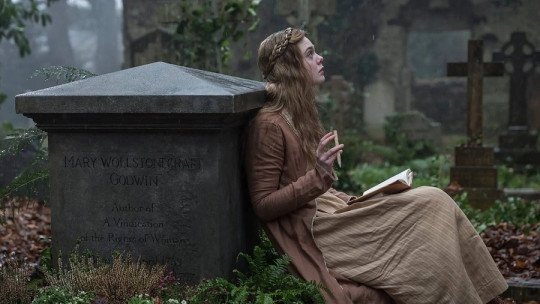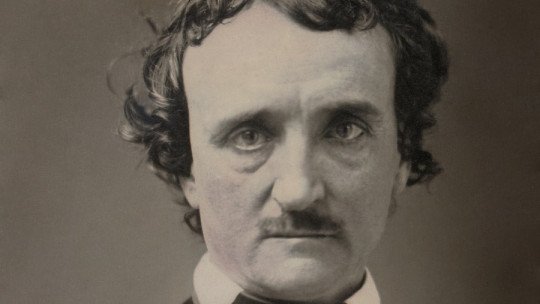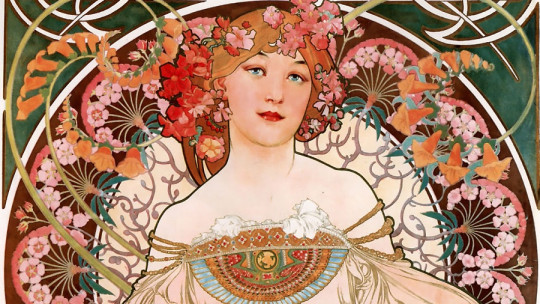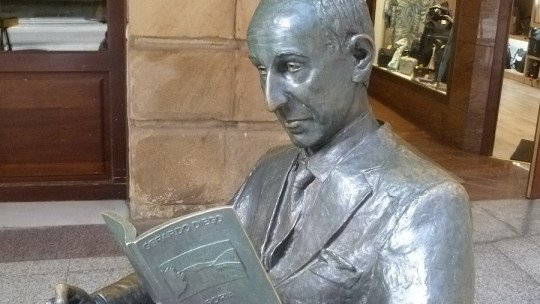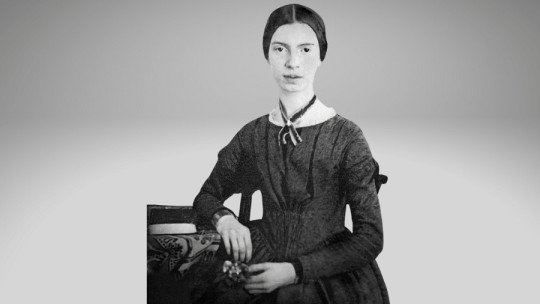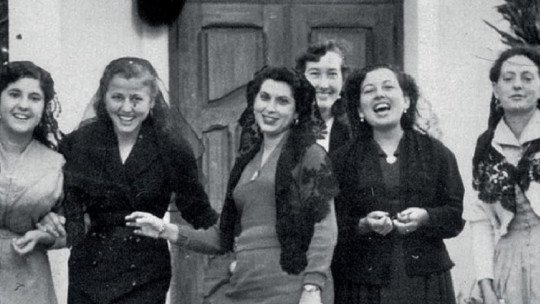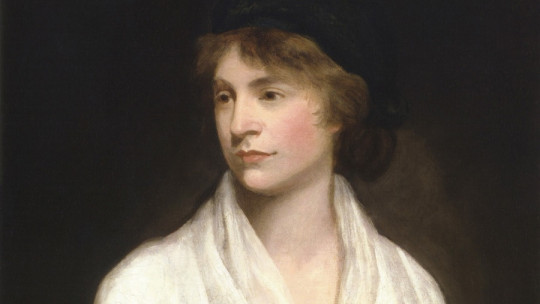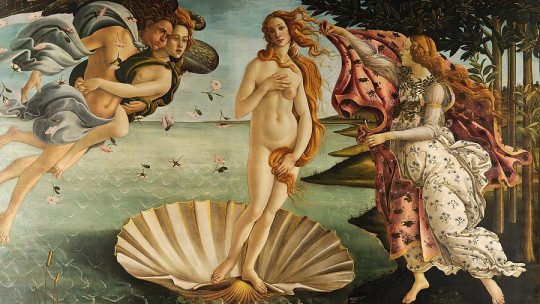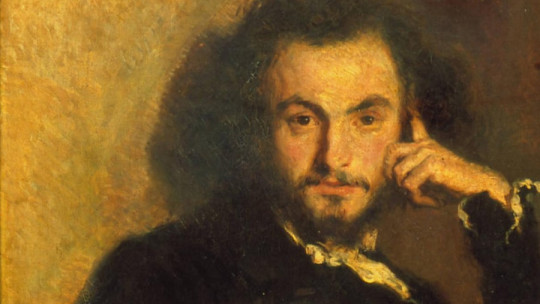
In 1884, the poet Paul Verlaine published a book called The cursed poets. It compiles the history of six poets, most of whom Verlaine knew personally: Tristan Corbière, Arthur Rimbaud, Stéphane Mallarmé, Marceline Desbordes-Valmore, Auguste Villiers de L’Isle-Adam and, finally, a certain Poverty Lelian (Poor Lelian), a mysterious writer that no one knew and who was nothing more than an anagram of Paul Verlaine himself. In other words, the compiler of the “cursed poets” included himself in the book.
But why “damned”? What requirements were needed to access this list? In this article we collect the biographies of some of the most important “cursed poets”
What are “cursed poets”?
The criteria according to which a poet can be considered “cursed” have been discussed ad nauseam by literary scholars. What led Verlaine to include these poets and not others in his famous list?
In principle, the author relied on the incomprehension that arose among his contemporaries. Verlaine’s intention when writing this book was to publicize the work of these authors, who had had virtually no success in the French literary scene, partly because of his stormy life, partly because of the nature of his creation which was not always welcome.
Although, at first, the name “cursed” fell on the six names mentioned above, the “canonical” list of cursed poets was expanded and, currently, Verlaine’s primitive list includes others. poets such as Edgar Allan Poe, William Blake, Charles Bukoswki, Baudelaire (known as the great “father of modern poetry”) and even Spanish authors such as Federico García Lorca.
The list is long and infinite, since more names are added to it. However, in this article we will focus on the biographies of the 4 most important “cursed poets.”
1. Charles Baudelaire (1821-1867), the cursed among the damned
Our distinguished list could not begin with another, since Verlaine himself was inspired by one of his poems to find the nickname “cursed poet.” The poem in question, the first of the controversy, The flowers of Evil (1857), begins like this:
When, by a decree of the supreme powers,
The Poet appears in this jaded world,
His mother scared and full of blasphemies
She clenches her fists towards God, who takes pity on her:
—”Ah! not having given birth to a whole knot of vipers,
Rather than nursing this ridiculousness!
Damn the night of ephemeral pleasures
In which my womb conceived my atonement!
The Poet is born, and he carries with him the curse that will condemn him (paradoxically, the poem is called Blessing…).
But who was Charles Baudelaire? He has been considered the “father of modern poetry,” and rightly so. Baudelaire moves away from the prevailing style of the 19th century, still heir to an antiquated Romanticism, and opens up completely to the “poetry of sensations.” Baudelaire’s work is full of images, of unconnected thoughts that, ultimately, will have a powerful influence on future surrealism.
Charles Baudelaire is included in the list of the “cursed poets”, first, because his work shook the bourgeois society of 19th century France in an unprecedented way (his collection of poems The flowers of Evil He was a victim of censorship and public ridicule, and he himself was prosecuted for “attacking morality”); and, second, because his lifestyle and his work perfectly represented the poet rejected by society, who gives himself over to debauchery (in the form of prostitution, alcohol and drugs) to mitigate the boredom of being away from society. beauty that you long for.
The city, for Baudelaire, is the setting where human beings brutalize and annihilate themselves, is the voracious monster who, like Cronus, devours his children. In it, the artist feels “spleen”, the word used at the time to describe tedium, boredom, and boredom. To mitigate this “spleen” (collected by Baudelaire in his work The Spleen of Paris) the poet tries to elevate himself through toxic substances and living on the edge.
Baudelaire had a very close relationship with his mother and a very difficult one with his stepfather, to the point that many authors believe that his later rebellion was, in part, the result of the animosity caused by his beloved mother’s second military husband. The poet presents a complex psychological picture (with a possible Oedipus syndrome included) that was exacerbated by the consumption of alcohol, laudanum and hashish.
During his youth he frequented the Latin Quarter of Paris, where he became friends with the great intellectuals of the time (among them, Balzac himself), and frequented brothels, where he contracted syphilis that would carry throughout his life and that, possibly, further aggravated his condition. state of mind. He had many lovers, but It was Jeanne Duval, a lowlife actress, who occupied his heart for the longest time Their relationship lasted no less than 14 years, during which they were mocked by Parisian society for being an interracial couple (Jeanne was mulatto, of Haitian origin). The young Ella inspired many of Baudelaire’s poems and succumbed to the same venereal disease that eventually claimed the poet in 1867.
2. Arthur Rimabud (1854-1891), the precocious poet
Jean Nicolas Arthur Rimbaud stopped writing at age 20 All of his literary production, which includes him among the great poets of French symbolism, is dated to his early adolescence and his very first youth. Gifted, extremely intelligent, but watched by a strict and rigid widowed mother, young Arthur soon finds himself suffocated between responsibility and his desire for freedom; especially, intellectual and creative freedom. At only 15 years old, he escapes from maternal surveillance twice, but is discovered and forced to return.
In a similar way to Baudelaire, it is interesting to trace the psychological profile of this boy, intelligent, sensitive, eager to see the world, who lives under the control of an always attentive mother, always ready to lock him within the walls of her house. This did not prevent, however, Arthur from bringing to light his first poems.
In 1871 he arrived in Paris and settled in the home of fellow poet Paul Verlaine and his wife. At only 17 years old, and perhaps finally feeling free from maternal ties, Rimbaud began to play with the dissolute life of Parisian bohemia (this life that all the “damned” dragged along) and spent his nights between absinthe and hashish. He acquires the reputation of an enfant terrible and scandalizes the very respectable Parisian society, to the point that he must return to Charleville, his hometown. He again with his mother.
His relationship with Verlaine did not end here, who had welcomed him into her home in Paris. A few months later, the young Rimbaud begins a love relationship with the mature poet. Verlaine abandons his pregnant wife and moves with Arthur to London, where they barely survive by teaching French Their relationship is stormy and violent; Verlaine is an alcoholic and, when he drinks excessively, he becomes angry and dangerous.
One night, while they were already settled in Brussels (London society, even more puritanical than French society, was scandalized by their relationship), Verlaine shoots his lover twice. The first shot hits Rimbaud in the wrist; the second bounces off the wall. Verlaine is drunk, extremely drunk, and Rimbaud is afraid. When Verlaine later loads the gun at him again, the young man decides to flee and report him, which causes Verlaine to end up in jail; not only for attempted murder, but also for “corruption of minors” Let us remember that homosexuality was criminalized and that Rimbaud was only 19 years old.
The former lovers would only see each other once more, in 1875. The relationship is over. While in Verlaine’s prison, Arthur has written a play, A Season in Hell, a colossal prose poem in which he describes his stormy relationship with Verlaine. Illuminations (1874) would be his last work. Arthur Rimbaud would not write again. Among his dedications from then on is the unscrupulous role of arms dealer. His honored status in universal poetry is due exclusively to what he wrote before the age of 20, his only literary testament. Without a doubt, an extraordinary “cursed poet.”
3. Paul Verlaine (1844-1896), the compiler of “damned”
Is he Poverty Lelian who appears as the last of the poets in his compilation. Verlaine, then, included himself in his list, as another “cursed poet.” Did he have reasons to do so?
We have already discussed how he shot his young lover, Arthur Rimbaud, and what his excesses with alcohol were. His sanguine nature was inflamed by drinking, to the point of abuse It appears that Verlaine mistreated both his mother and his wife, Mathilde, whom he abandoned in 1871 for the young poet. So far, we see enough reasons to include it on the list…
While in prison, where he was serving a sentence for two crimes (one, the attempted murder of Rimbaud; two, for “corruption of minors”), he passionately converted to Catholicism. Verlaine is the clear example of a poet who frantically searches for redemption and who only finds excesses, visions and madness along the way.
Literally, Paul Verlaine is one of the great French Symbolists In his youth he collaborated with the Parnassians, one of the first aesthetic movements that took their name from the Greek Parnassus; from this first period are his Saturnian poems (1866). He enjoyed a certain name during his life (in 1894 he was named “prince of poets” and was granted a pension), but in his last years he found himself almost destitute and his work barely earned him enough money. eat. His wife Mathilde has abandoned him; So has his lover Arthur Rimbaud. Verlaine is alone and sick.
In 1896, pneumonia took him to the next world, at only 51 years old. Parisians attending his funeral tell of a strange event: when his coffin was passing through the Opera, the statue representing Poetry lost an arm, which fell to the ground along with the lyre it was holding. Verlaine, “cursed” poet even after his death…
4. Edgar Allan Poe (1809-1849), the teacher of teachers
It is not included in Paul Verlaine’s list, but all the poets on it were influenced in one way or another by the genius of the United States. Poe is the teacher of teachers; the one who laid the foundations of the gothic story, above all, but also one of the first to go down in posterity as a “cursed poet” by the vox populi. Charles Baudelaire himself translated his work into French, and was especially fascinated by his story. The black cat. The dark air of his creations, the diabolical aura of many of them, can undoubtedly be traced in The flowers of Evil.
Edgar Allan Poe was born only as Edgar Poe, but the untimely death of his parents left him in the hands of a wealthy family in the southern United States, the Allans, who had no children of their own. And here we find, again, one of the recurring patterns in the lives of the “cursed poets”: the loving mother and the absent or castrating father. Because although Mrs. Allan loved and treated Edgar as if he were hers, the same did not happen with her husband, who always saw the boy more as the whim of a sterile woman than as a true son.
In fact, Mr. Allan never legally adopted the young man and was always tyrannical and hostile towards him.
It is evident that, Once Mrs. Allan died, Edgar was deprived of a very important reference in his life Reserved, taciturn, always in need of affection, he soon found the only blood relatives he had left alive, Mrs. Clemm and her daughter Virginia. This is one of the darkest episodes of Poe’s life and the one that has caused the most rivers of ink to flow: his marriage to this 13-year-old girl, when he was almost 30. Disturbing, to say the least.
Poe was always very clear about his vocation as a poet, but the difficulties of making a living from poetry led him towards journalism And even though he was a great writer (all the newspapers in which he collaborated automatically increased the number of subscribers) he always lived precariously, on the verge of poverty. The family lived in a miserable cabin on the outskirts of New York, cold and inhospitable, and Mrs. Clemm was forced to go out at dusk to look for food in the surrounding orchards.
Poe’s alcoholism worsened when Virginia fell ill with tuberculosis. Upon the death of the young woman, at only 23 years old, Poe fell into a deep depression from which he would hardly emerge. He died two years after Virginia, in strange circumstances that have only increased his reputation as “cursed.” They found him in an alley in the city of Baltimore, wearing clothes that were not his and the victim, it was said, of colossal delirium tremens. Poe died a few hours later in the hospital. He was only 40 years old.

